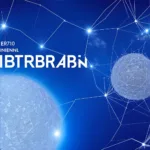
Ethereum upgrade, known as the Shanghai upgrade, which took place in April, has not led to the expected increase in activity on the blockchain as reported by JPMorgan. While the transition from proof-of-work to proof-of-stake resulted in a significant reduction in energy consumption, daily transactions have fallen by 12%, daily active addresses by nearly 20%, and total value locked in DeFi by almost 8%.
Impact of the Shanghai Upgrade
The Shanghai upgrade aimed to improve the Ethereum blockchain’s efficiency and scalability. However, the anticipated increase in activity has not materialized. The shift to proof-of-stake has indeed reduced energy consumption, but other metrics have not shown the expected growth.
Daily transactions on the Ethereum network have decreased by 12%, and daily active addresses have also experienced a decline of almost 20%. Furthermore, the total value locked in decentralized finance (DeFi) platforms has dropped by nearly 8%.
External Factors Influencing Ethereum’s Performance
The report by JPMorgan suggests that the bearish forces of the past year, including regulatory crackdowns and a shrinking stablecoin universe, may have outweighed the positive impact of the Ethereum upgrade. These factors have contributed to the reduced activity on the blockchain.
Regulatory Crackdowns
Various governments worldwide have been imposing stricter regulations on cryptocurrency trading and mining, which has negatively affected the crypto market. These crackdowns have led to a decrease in trading volumes and have dampened investor sentiment, resulting in reduced activity on the Ethereum network.
Shrinking Stablecoin Universe
The stablecoin market has also experienced a contraction, with several stablecoins losing their peg to the US dollar. This has led to a decrease in the overall market capitalization of stablecoins, limiting their use in DeFi platforms and reducing the total value locked in these platforms.
Staking and Centralization Concerns
Despite the reduced activity, staking on the Ethereum network has increased by 50%. However, liquid staking protocols remain uncomfortably high, raising questions about centralization. The high concentration of staked assets in a few large staking pools may lead to centralization, which goes against the decentralized nature of blockchain technology.
Future Outlook: EIP-4844 and Protodanksharding
The upcoming Ethereum upgrade, known as EIP-4844 or Protodanksharding, may lead to increased activity on the blockchain. This upgrade aims to further improve the network’s scalability and efficiency, potentially attracting more users and developers to the platform.
However, the continued bearish forces, such as regulatory crackdowns and the shrinking stablecoin universe, remain a headwind for the Ethereum network. These factors may continue to hinder the growth and adoption of the platform, despite the improvements brought about by the Ethereum upgrades.
Conclusion
In conclusion, the Shanghai Ethereum upgrade has not resulted in the anticipated increase in blockchain activity. External factors such as regulatory crackdowns and a shrinking stablecoin market have outweighed the positive impact of the upgrade. While staking has increased, concerns about centralization persist. The upcoming EIP-4844 upgrade may lead to increased activity, but the negative forces affecting the market need to be addressed for the Ethereum network to reach its full potential.




